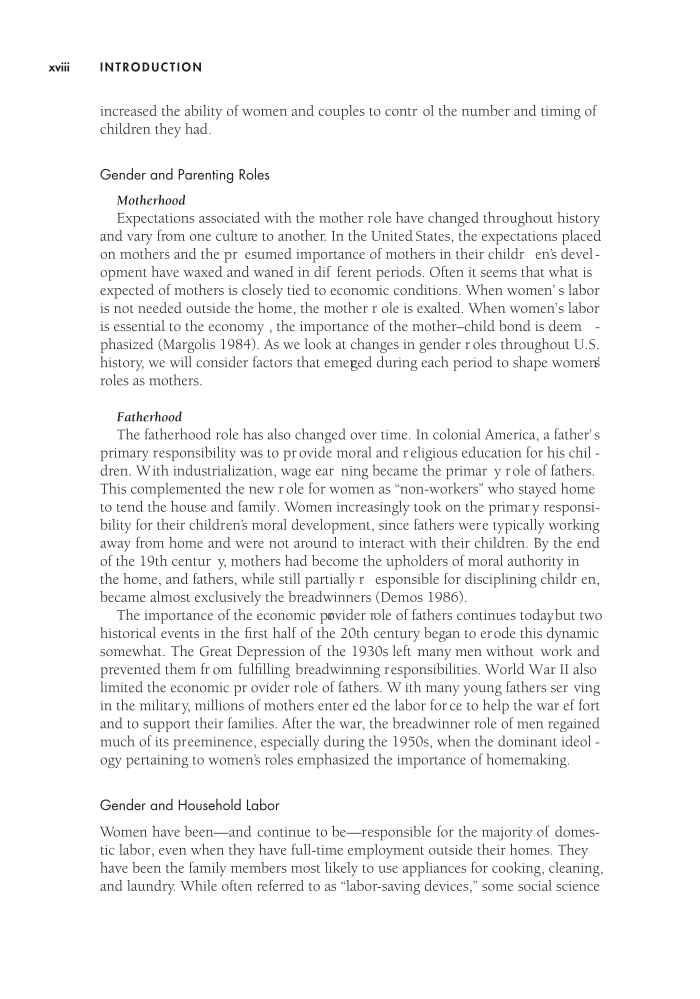xviii Introduction increased the ability of women and couples to contr ol the number and timing of children they had. Gender and Parenting Roles Motherhood Expectations associated with the mother role have changed throughout history and vary from one culture to another. In the United States, the expectations placed on mothers and the pr esumed importance of mothers in their childr en’s devel- opment have waxed and waned in dif ferent periods. Often it seems that what is expected of mothers is closely tied to economic conditions. When women’ s labor is not needed outside the home, the mother r ole is exalted. When women’s labor is essential to the economy , the importance of the mother–child bond is deem - phasized (Margolis 1984). As we look at changes in gender r oles throughout U.S. history, we will consider factors that emerged during each period to shape women’s roles as mothers. Fatherhood The fatherhood role has also changed over time. In colonial America, a father’ s primary responsibility was to pr ovide moral and r eligious education for his chil - dren. With industrialization, wage ear ning became the primar y role of fathers. This complemented the new r ole for women as “non-workers” who stayed home to tend the house and family. Women increasingly took on the primar y responsi- bility for their children’s moral development, since fathers were typically working away from home and were not around to interact with their children. By the end of the 19th centur y, mothers had become the upholders of moral authority in the home, and fathers, while still partially r esponsible for disciplining childr en, became almost exclusively the breadwinners (Demos 1986). The importance of the economic provider role of fathers continues today, but two historical events in the first half of the 20th century began to erode this dynamic somewhat. The Great Depression of the 1930s left many men without work and prevented them fr om fulfilling breadwinning responsibilities. World War II also limited the economic pr ovider role of fathers. W ith many young fathers ser ving in the military, millions of mothers enter ed the labor for ce to help the war ef fort and to support their families. After the war, the breadwinner role of men regained much of its preeminence, especially during the 1950s, when the dominant ideol - ogy pertaining to women’s roles emphasized the importance of homemaking. Gender and Household Labor Women have been—and continue to be—responsible for the majority of domes- tic labor, even when they have full-time employment outside their homes. They have been the family members most likely to use appliances for cooking, cleaning, and laundry. While often referred to as “labor-saving devices,” some social science
Document Details My Account Print multiple pages
Print
You have printed 0 times in the last 24 hours.
Your print count will reset on at .
You may print 0 more time(s) before then.
You may print a maximum of 0 pages at a time.

































































































































































































































































































































































































































































































































































































































































